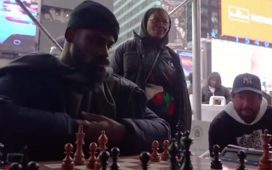Even some of the most avid proponents of integration have acknowledged that the system’s demographics make school-by-school diversity daunting, and have focused on ways to desegregate schools in mixed-income, racially diverse neighborhoods.
Still, activists and academics have offered proposals that they say could begin to chip away at segregation: The city could change selective admissions policies that tend to exclude black and Hispanic students from the highest-performing schools; adopt a cross-borough school transportation plan; or require that specific neighborhoods create desegregation plans for their schools.
Brad Lander, a Democratic councilman from Park Slope, Brooklyn, which will implement its own integration effort in September, said that even incremental change on desegregation is meaningful. “No one is going to march with a sign that says, ‘Schools are 10 percent less segregated.’ But on the other hand, 10 percent less segregated is 100,000 kids in integrated schools,” he said, praising Mr. Carranza.
The schools chancellor and the mayor have taken modest steps to integrate slices of the city.
They set aside $2 million for more of the city’s 32 local districts to create desegregation plans, but it is not yet clear which neighborhoods will do so voluntarily. And while the chancellor has supported several desegregation plans in diverse neighborhoods with segregated schools, including the Upper West Side and Park Slope, those proposals were created by parents and local politicians before Mr. Carranza arrived in New York from Houston.
The mayor and chancellor approved recommendations made by an integration task force, including a goal that schools should be evaluated according to diversity and not just academic achievement. But they have not yet announced details about how those changes will be implemented.
The duo’s most high-profile attempt to diversify schools, however, ended in stinging defeat.
The State Legislature killed a plan to desegregate the city’s eight fabled and highly sought after specialized high schools by scrapping the schools’ admissions exam and instead offering spots to top students from each city middle school.
Stuyvesant High School, the most selective of the elite schools, with the highest cutoff score for admission, was only 4 percent black and Hispanic last year, while nearly 75 percent of the student body was Asian-American.






